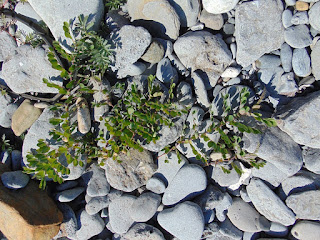Map showing average number of species per monad within each hectad to the of 2018
By the end of 2018 all but one monad had species recorded in
Co. Wexford.
There are 2558 monads in the county.
The aim when I started recording for the Flora of Co. Wexford
in 2008, was to record one monad from each Tetrad across the county. Paula
O’Meara started recording in 2010. A couple years later I decided to aim to
visit every monad, something I didn’t really think possible by the end of 2019.
Not sure when it was decided to aim for a minimum of 100 species per monad.
S8251 is the only monad with no records.
There are 404,870 individual monad species records across
the county.
The average number of species for a monad across the county
is 158.
153 monads have under 100 species recorded. The majority are
part monads around the county margin, where the neighbouring county has the
largest area of land, or most of the monad is in the sea. There is one monad
that has only Zostera marina
(Eelgrass), even at low tide there is no land above sea-level. Another monad
has only a sandy beach as land, the one species being found is Atriplex laciniata (Frosted Orache).
Two whole monads only have 1 species recorded, hopefully
they will be visited in the next couple of weeks. Access can be a big problem,
this is usually the reason why some whole monads have less than 100 species
recorded. Other whole monads just don’t have a very good variety of habitats.
For example one monad was all arable, and weed killer had been used along every
field bank, only the toughest of species surviving.
Looking forward to seeing how 2019 turns out, and how many
more monads can top 100 species.


























